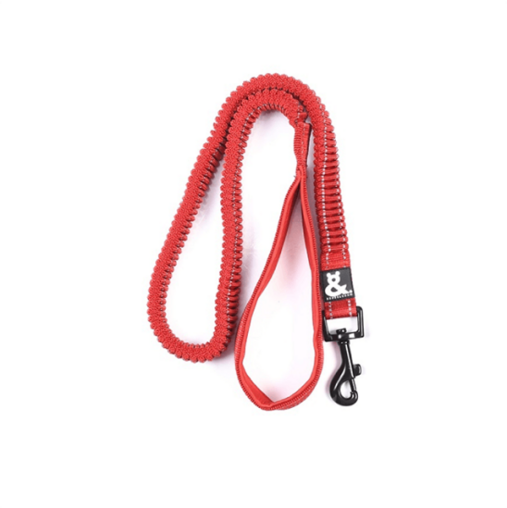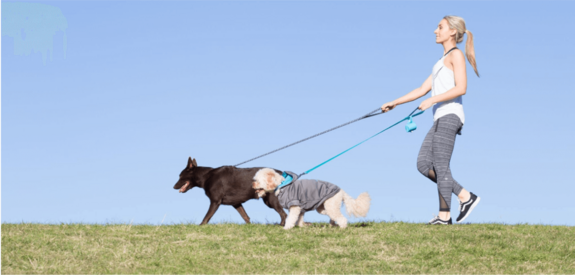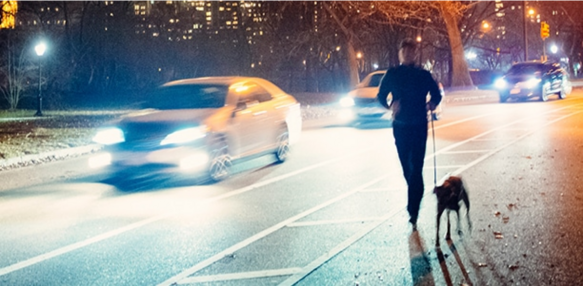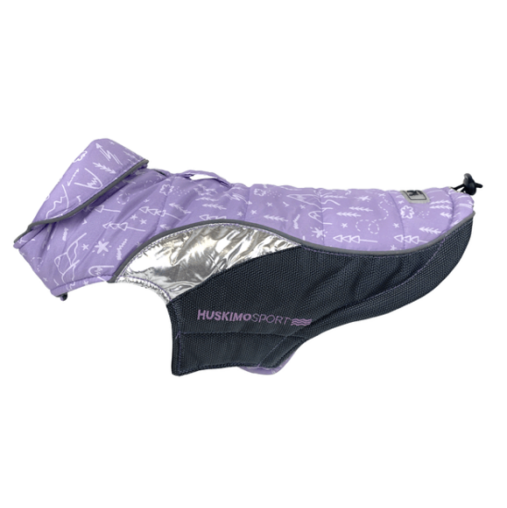Last Updated: 24/09/2025
5 Essential Dog Walking Tips
Wanting to know how to make walking your dog enjoyable? Learn more about pulling on the lead and safety tips from our vet team.
Author: Dr Teagan Lever BVSc (Hons)
Reading Time: 2 minutes - short read
Walking your dog regularly provides them with exercise as well as mental stimulation; but there are a few hazards you should look out for. Follow these 5 tips to keep you both safe, fit, and walking happy while you're out and about!
1. Get the Right Gear


With so many great options available for harnesses, collars, and leads, there's no excuse not to keep your dog safe while out and about. If you are walking at night time, invest in an reflective collar, harness or lead and light up pendant to increase your visibility to passing drivers.
Retractable Leads: Be Wary
If you are using a retractable lead there are some important things to be aware of to prevent injury to you or your dog.
Retractable leads can be convenient in certain situations, but they can lead to certain dangerous situations if not used correctly. It is best not to let the lead out too far; it should be long enough that you still have effective control. Be sure to lock it off when it has reached the desired length so you aren't caught unawares. If the lead is too long you or your dog may become tangled or your dog could run into the way of incoming traffic!
What about dogs with neck sensitivities?
For dogs who suffer from a sensitive neck or upper back, we recommend opting for a soft, gentle harness, and considering an anti-jolt lead. This is particularly important for dogs who have a history of neck injuries or those prone to intervertebral disc disease, such as dachshunds. There are a number of soft harnesses that provide proper restraint without applying too much pressure to the neck and worsening your pup's pain. Our top recommendations include Puppia Soft Vest Harness and the Fuzzyard Step-in Harnesses. For a great anti-jolt lead, try the highly elastic Rufus and Coco Stop-Jolt Stretch Lead.
Our Top Recommended Dog Harnesses and Collars

With a variety of front-attaching options, Rogz harnesses are perfect for dogs that need a little extra security on walks.
Fuzzyard's range of harnesses come in a fun range of patterns and are durable, non-slip, gentle, and built to last.
Puppia's soft harnesses are perfect for dogs with neck sensitivities, due to their gentle and pressure-reducing design.

Rufus and Coco leads are premium quality, and this anti-jolt lead has an elastic body to soften sharp pulls.
Dr Carla explains How To Fit A Dog Harness. Watch more videos on Pet Circle's Youtube Channel.
2. Address their lead-pulling

How can you stop your dog from pulling on the lead?
Proper training is vital in order to stop your dog pulling on the lead, and it usually requires a great deal of persistence, patience, and mental fortitude! For tips on training, see our article Training Your Puppy to Walk on a Lead
What are the best anti-pull harnesses and collars?
To augment your training, there are a number of essential products that are routinely recommended by dog trainers and vets. Rather than opting for an outdated, pain-inducing device like a choker chain or spiked collar, we recommend products that cleverly redirect your pup's pulling power. The Halti Headcollar contains a padded nose strap which works by gently directing the head, steering your dog into the desired position. Likewise, anti-pull harnesses like the Halti Harness or the Rogz Stop Pull Harness redirect your dog's pulling and don't require attachment to the face.
Some dogs who pull also benefit from being off leash. Of course keeping your dog on a lead at all times is the safest way to walk, but if you are confident in their ability to come when called, off leash walking can be great fun for you both. Always make sure that you check the council regulations regarding off leash walking in your area, or you may cop a hefty fine!
3. Proper Identification

Even the best made plans can go awry, so it is important to have a way of getting your dog returned to you if they run off. Microchipping is a safe, affordable and lifelong way to ensure that your pet is always able to be identified. In fact, most states and territories now require dogs and cats to be microchipped. Your vet or local council can give you more information. Remember that if your contact details change, you need to update them with your pet's microchip registry. Read more about Microchipping Your Puppy.
ID Tags are not only fashionable, but provide another way in which your pet can be quickly identified. Unlike a microchip which needs to be read by an electronic reader, an ID tag instantly allows anyone who finds your pet to get your contact details.
4. Remember Road Safety
When walking along roadways, stick to the footpath wherever possible. If you do have to walk on the road, it is best to do so facing oncoming cars with your dog on your side furthest away from traffic. It's important to train your dog to walk beside you, obey your commands, and avoid the road.

Read more about how to Train Your Dog To Walk On a Lead.
Visibility: If you are walking at night time, invest in a reflective collar, harness or lead and light up tag to increase your visibility to passing drivers.
Top walking products to increase visibility
A light-up pendant can help keep your dog visible in the dark when out walking. Click on image to see our whole range of light-up pendants.

Using clever LED technology, this glowing range from Nite Ize is perfect for walking your dog at night safely.

A reflective coat, lead, or collar is a great way to keep your pup visible in traffic.
5. Be Aware of the Weather

Dogs don't sweat apart from on their paws, and rely solely on panting to regulate their body temperature on hot days. This method of temperature regulation is not very efficient and they can quickly overheat, especially in the Australian summer.
Brachycephalic breeds (dogs with short snouts) like pugs, bulldogs and boxers are particularly susceptible. To reduce the risk of heat stress, avoid walking your dog during the heat of the day and provide plenty of opportunities for them to rest and drink water. To help keep your pup hydrated, we recommend taking a drink bottle and collapsible travel bowl on every daytime walk.
Signs of heat stress include excessive panting, heavy drooling, very red gums, weakness and loss of consciousness. If you think your dog may be affected it is critical that you get them to a veterinarian as soon as possible.
Read more about how to avoid and treat Read more about how to avoid and treat Heatstroke In Pets.
Remember: AUSSIE ROADS GET HOT! Another thing to be mindful of in the summer months is the temperature of the footpath or bitumen. The soft pads on your dog's feet may burn and blister if they are walked on a surface that is too hot. If the road or pavement is too hot for you to hold the back of your hand against for a count of five, it is too hot for your dog to walk on.
Walking your dog regularly doesn't just keep them fit and healthy, it also has benefits for you including lower blood pressure, reduced stress and increased cardiovascular fitness. Just be sure to stay safe, and bring plenty of tidy up bags with you!
Further Reading
Want to read more? Check out the following articles, also written by our vet team:
What Is The Best Harness For My Dog?